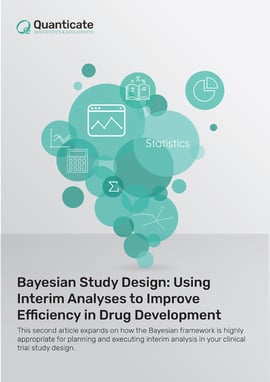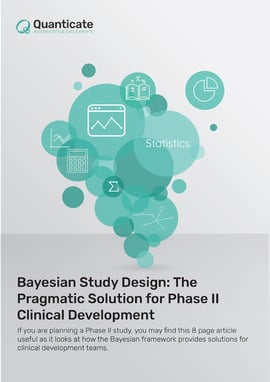Regulatory Submission Review Services
Ensure that your regulatory submission isn’t needlessly delayed through a lack of quality or integrity of data.
Can you Afford Risking a Delayed Regulatory Submission?
Before the FDA start reviewing a submission, your submission must first overcome the new hurdle of ensuring that it conforms to the standards required in the FDA Data Standards Catalog.
“The FDA may refuse to file for New Drug Applications (NDAs) and Biologics License Applications (BLAs) or refuse to receive for Abbreviated NDAs (ANDAs) any electronic submission whose study data do not conform to the required standards specified in the FDA Data Standards Catalog.” - FDA
In a recent analysis conducted by the FDA, 32% of submissions with study data had critical data conformance issues.
When a submission is rejected for lack of study data conformance, the submission sequence is not even transferred from the FDA Electronic Submission Gateway into the FDA electronic document rooms where the FDA Review process officially starts!
Then only 50% of new NME/IND applications that passed the screening process for study data conformance are approved on first submissions by the FDA. There is a median delay of 435 days to approval following the first unsuccessful submission and 24% of the first-time submission failures include inconsistent study results either across endpoints or sites and studies.
Re-submission of failed applications is costly, delaying marketing approval as the process needs to start again with increased timelines, and delaying the availability of vital new drugs to patients.
The efficacy associated reasons for failed first-time submissions are:
How to reduce the risk of a delay?
We review your submission content to:
- Ensure that data are formatted and submitted according to the correct data standards
- Uncover atypical data patterns within or across studies that act as a red flag warning to investigate further for an FDA Reviewer
- Investigate the influence of atypical data patterns on the robustness of the submission efficacy and safety conclusions
Study Data Conformance
Quanticate offers CDISC Compliance services and CDISC mapping expertise across multiple situations. When reviewing submission data our team will ensure that CDISC standards are met before the submission is sent with support on:
SDTM Compliant Datasets and supporting documentation (define.xml, cSDRG, aCRF)
ADaM Compliant Datasets and supporting documentation (define.xml, ADRG)
Integrated summaries
eCTD Compliance
Quanticate are vigilant in keeping up-to-date with the latest CDISC, regulatory and other news, such as PhUSE guidance to ensure that you have the latest accepted standards applied and comply with the FDA Data Standards Catalog.
Data Quality Oversight
Quanticate provide a Data Quality Oversight (DQO) service to examine the quality and fitness of the data package associated with the submission. Quanticate has selected the industry leading FDA endorsed software of CluePoints to perform its DQO analysis. We use CluePoints’ machine learning functionality to detect spurious data patterns both within and across studies. If appropriate, we also use software such SAS JMP for further statistical investigation. DQO enables the quick identification of outliers and inconsistencies across studies which can then be addressed to improve data quality.


Statistical Review of Submission Data
Our biostatisticians review the impact of anomalies and missing data on the results of the submission in an attempt to pre-empt the regulatory reviewer’s likely comments so that they can be addressed in the initial submission.
In addition, we can broaden the review to:
- Review of the distribution and balance of the study populations across studies, sites and regions
- Confirm populations are as defined in protocol
- Analyze the consistency of efficacy analyses across studies, sites, regions, populations and timepoints
- Review dosing evidence used to justify the dosing decision
- Examine appropriateness of endpoints, by reviewing existing regulatory guidance and relevant literature
- Understand confounding factors, for example use of concomitant medication
- Review distributions of adverse events, including, for example, severity, seriousness and death across studies, sites, regions and populations
- Check for dose-related toxicity effects
- Determine whether correct interpretations have been made along with robustness of conclusions
Determine the level of service you need to assure that your submission is ready for review by the regulatory authority
![[Webinar] Regulatory Submission Review](https://www.quanticate.com/hs-fs/hubfs/Resources-2022/webinars/%5BWebinar%5D%20Regulatory%20Submission%20Review.jpg?width=270&name=%5BWebinar%5D%20Regulatory%20Submission%20Review.jpg)
WEBINAR
Receive support with your Investigational New Drug (IND) submission

WHITEPAPER
Improve your drug development efficiency with Interim Analyses
.jpg?width=270&name=Integrated%20Summaries%20(ISS%20ISE).jpg)
WHITEPAPER
Learn how to prepare your ISS/ISE for regulatory submissions

WHITEPAPER
Discover the benefits of the Bayesian framework for Phase II studies
We are here to help reduce the risk of delays in your regulatory submissions.
Fill out the form to begin.
Request a consultation
CONTACT DETAILS
Address - UK HQ:
9-11 Bancroft Court
Hitchin, Hertfordshire
SG5 1LH
United Kingdom
Tel: +44 (0)1462 440 084
Fax: +44 (0)1462 440 086
Email: enquiries@quanticate.com
Address - US HQ:
8601 Six Forks Rd
Suite 400
Raleigh, NC, 27615
United States
Tel: +1-919-882-2016
Email: info@quanticate.com
QUANTICATE
BLOG TOPICS
© 2024 Quanticate



